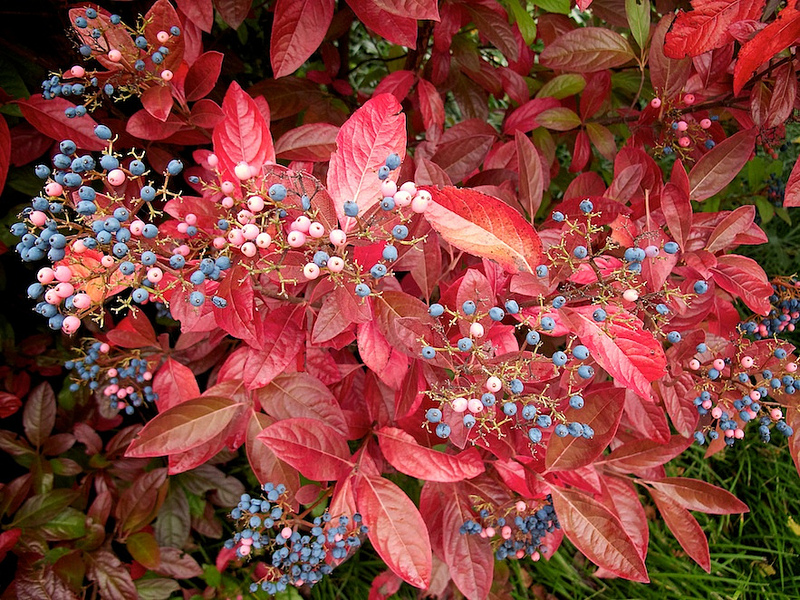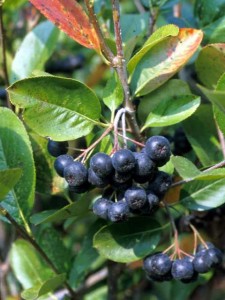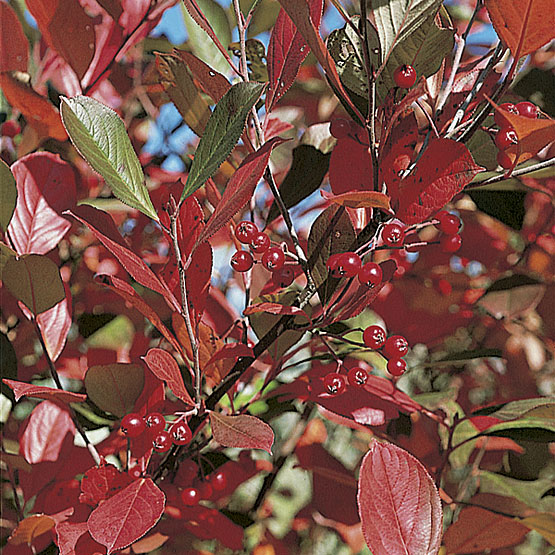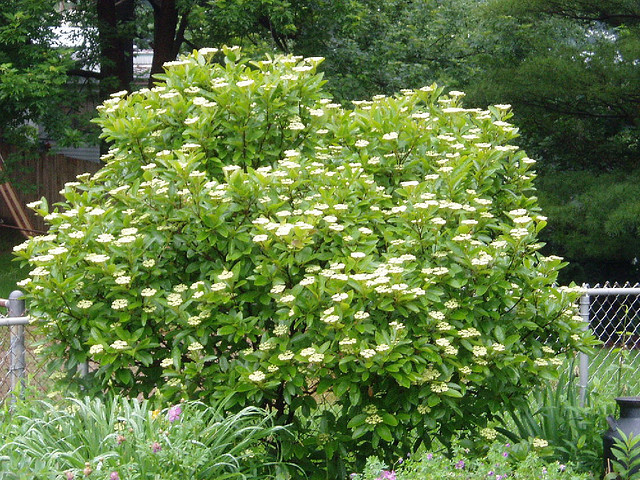Last fall I took my son to Drumlin Farm, a working farm and wildlife sanctuary run by Mass Audubon. (My son likes to visit the chickens and say hello to the sheep and goats. If you live in the area and haven’t been before it’s worth a visit.) There’s a long path down the hill from the main entrance to the main farm & education area. Within the last few years they planted it with native shrubs. I could identify most of them but there was one that had me stumped. Nevermind the species, I couldn’t get a bead on the genus. It had pink and blueberry-colored berries and burgundy-colored foliage. (It was pretty late in fall and a good fraction trees and shrubs had already dropped their leaves.) Basically, I saw this but with deeper-red leaves:
The berries were viburnum-like but the foliage didn’t look similar to any of the viburnums I was familiar with: viburnum trilobum, viburnum dentatum, viburnum acerfolium. After we finished our visit with the chickens and goats, we made our way up the hill and stopped in at the main office. (My son isn’t old enough to be embarrassed by me stopping and asking people questions about plants. We’ll see how long that lasts.) Their plant person wasn’t working that day but the desk worker handed me an info sheet with what they’d planted around the farm. Not much help. I decided I had to pick something off the list though so I went with Aronia melanocarpa:
Obviously that’s not right – berries and leaves are different, although the leaves maybe a little more subtly so, at least to an amateur like me. I rationalized my guess on the basis of vaguely similar leaves. I’d actually never seen an Aronia melanocarpa. I was guessing based on our Aronia arbutifolia which looks like this in the fall:
That’s obviously not it but it’s somewhat similar – at least to my eye.
I don’t like not knowing the right answer (about anything, not just plants) so I e-mailed Drumlin’s plant person. She got back to me the next day and determined in short order that it was Viburnum nudum Winterthur, a.k.a., witherod viburnum. I mentioned that the berries looked like viburnum fruits to me but I got thrown off by the leaves. Her reply: “You have discovered one of the dilemmas of identifying Viburnums. I don’t know of a genus that has a higher variety of leaf shapes than this one.” Yup. Anyhow, Viburnum nudum Winterthur are attractive plants. I particularly liked the berries – which the birds like to eat – and the foliage was nice too. By virtue of their age, Drumlin’s plants were relatively small but they get good-sized – an image turned up by a Google search:
Plant characteristics as per the Missouri Botanical Garden website:
- Zone: 5 to 9
- Height: 5 to 12 feet
- Spread: 5 to 12 feet
- Bloom Time: April to May
- Bloom Color: White
- Bloom Description: White
- Sun: Full sun to part shade
- Water: Medium to wet
- Maintenance: Low
Interestingly, Michael Dirr doesn’t have anything on it in Hardy Trees and Shrubs.




